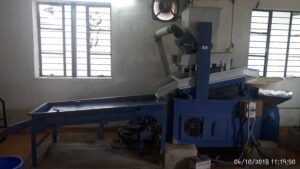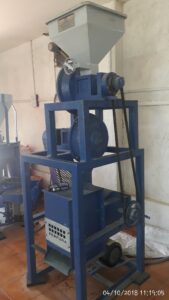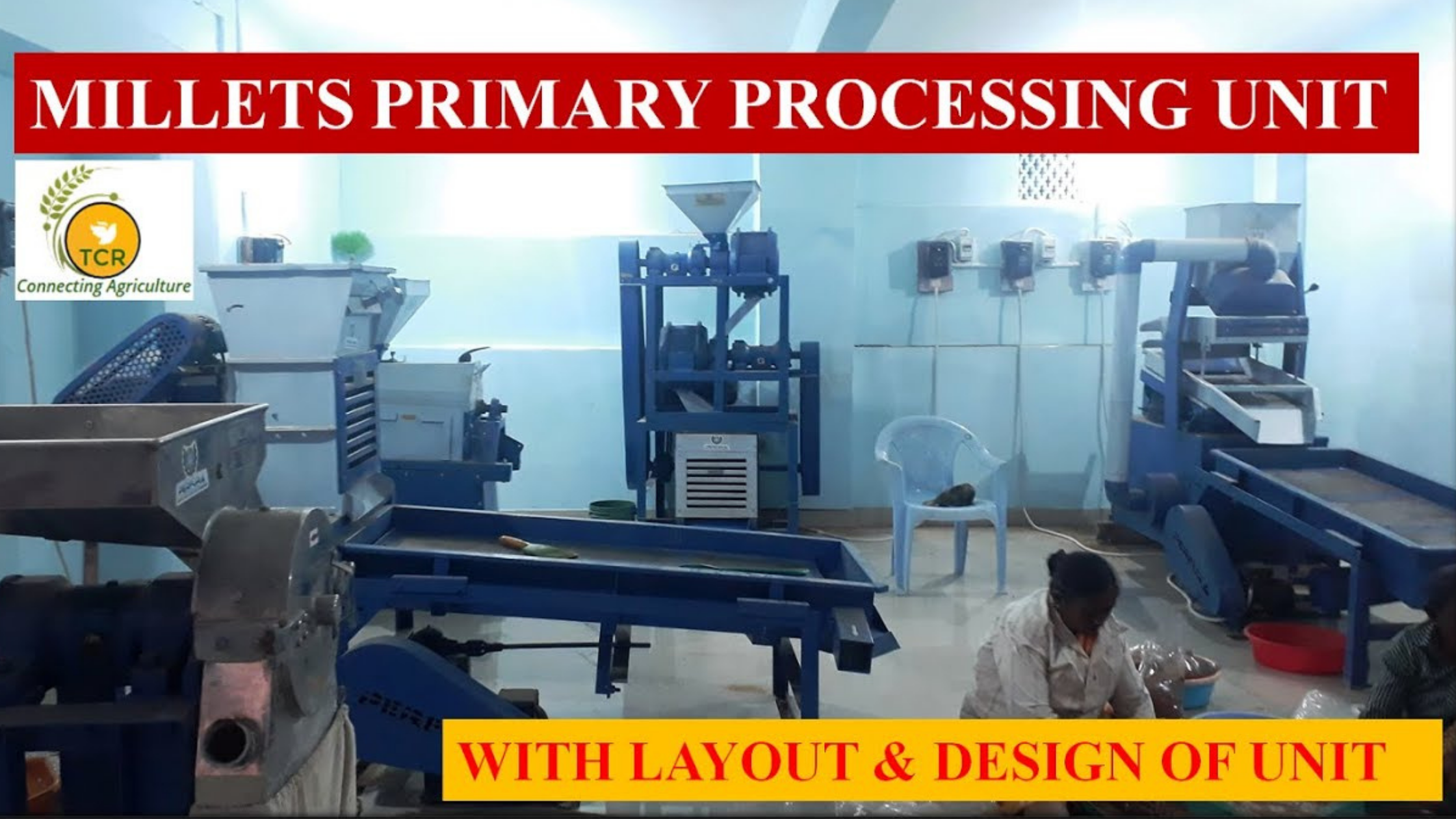MILLETS PROCESSING:
1. GRADER CUM ASPIRATOR:
Primary cleaning is done using a grader cum aspirator with the support of different sieve sizes. Grader separates good quality grain from sticks, big stones, sand, grass, etc. Here the material with different shapes and sizes gets separated.
The selection of the correct sieve type and size is crucial in this process. Proper care should be taken to prevent material from clogging. The machine operator should use a brush to make sure the material doesn’t clog.
2.DESTONER CUM ASPIRATOR
The material coming from the grader is sent to a de-stoner for removing small stones and mud balls that are identical in size. Destoner is a gravity separator that separates material based on the weight of the material.
The cleaned grain from the de-stoner is sent for dehulling/dehusking. A de-stoner has two sieves under the hopper which grades the material coming from the hopper.
The graded material falls on the de-stoner bed where the lighter material moves towards the front end and the heavier material moves towards the rear end. The aspirator attached to the Destoner will remove the fine dust and sand particles.
The air adjustment slot has to be adjusted carefully depending upon the material. If there is no flow backward, we have to open the slot and adjust to flow the stones backward.
Destoner is suitable for removing stones and impurities from various Millets like Little Millet, Kodo Millet, Barnyard Millet, Proso Millet, Finger Millet, Foxtail Millet, etc.
Here is one thing to add, it is better to have a Variable Frequency Drive. It is used in electro-mechanical drive systems to control AC motor speed and torque by varying motor input frequency and voltage. It will lessen mechanical and electrical stress, reducing maintenance and repair costs, and extending the life of the motor and the driven equipment.

3.DEHULLER CUM ASPIRATOR:

4. PULVERISER:
It is a double-stage pulverizer in which the grains, spices, rice, wheat, etc could be ground to a fine powder. A double chamber is provided in which the grinding process takes place.
In the first chamber, the initial crushing process takes place and in the next chamber, grains are made into a fine powder. Millets (Little, Kodo, Foxtail, Proso, Barnyard, Finger, Pearl Millet & Sorghum)
Related Post: Best Millet Processing Machines
MILLETS PROCESSING UNIT DESIGN & LAYOUT:
To establish a millet processing unit you need at least 25*25ft space with proper flooring and at least half feet concrete laid under the flooring where the machines will be installed.
The height of the walls should at least be 10ft tall with exhaust fans in all four corners. All machines have to be installed using foundation bolts to arrest vibrations and also balanced properly. Machine installation is critical because it would directly affect the life of the machine and also its performance.
Author: Tapas Chandra Roy, A Certified Farm Advisor on Millets, ‘Promoting Millets from Farm to Plate’. In a mission to take the forgotten grains- Millets to Millions. To remain updated on my blogs on millets you can join my Telegram Channel – Millet Advisor.


यह यूनिट लगाना है सम्पूर्ण जानकारी ईमेल पर प्रदान करे
इस यूनिट का कोटेशन चाहिए